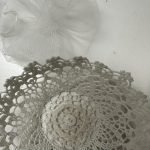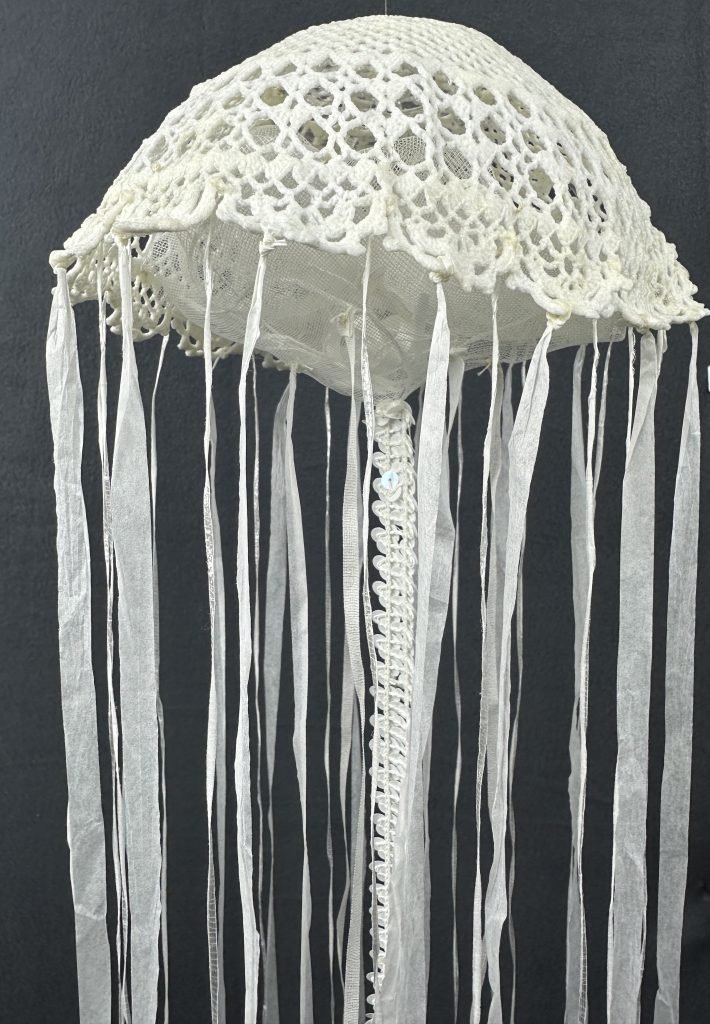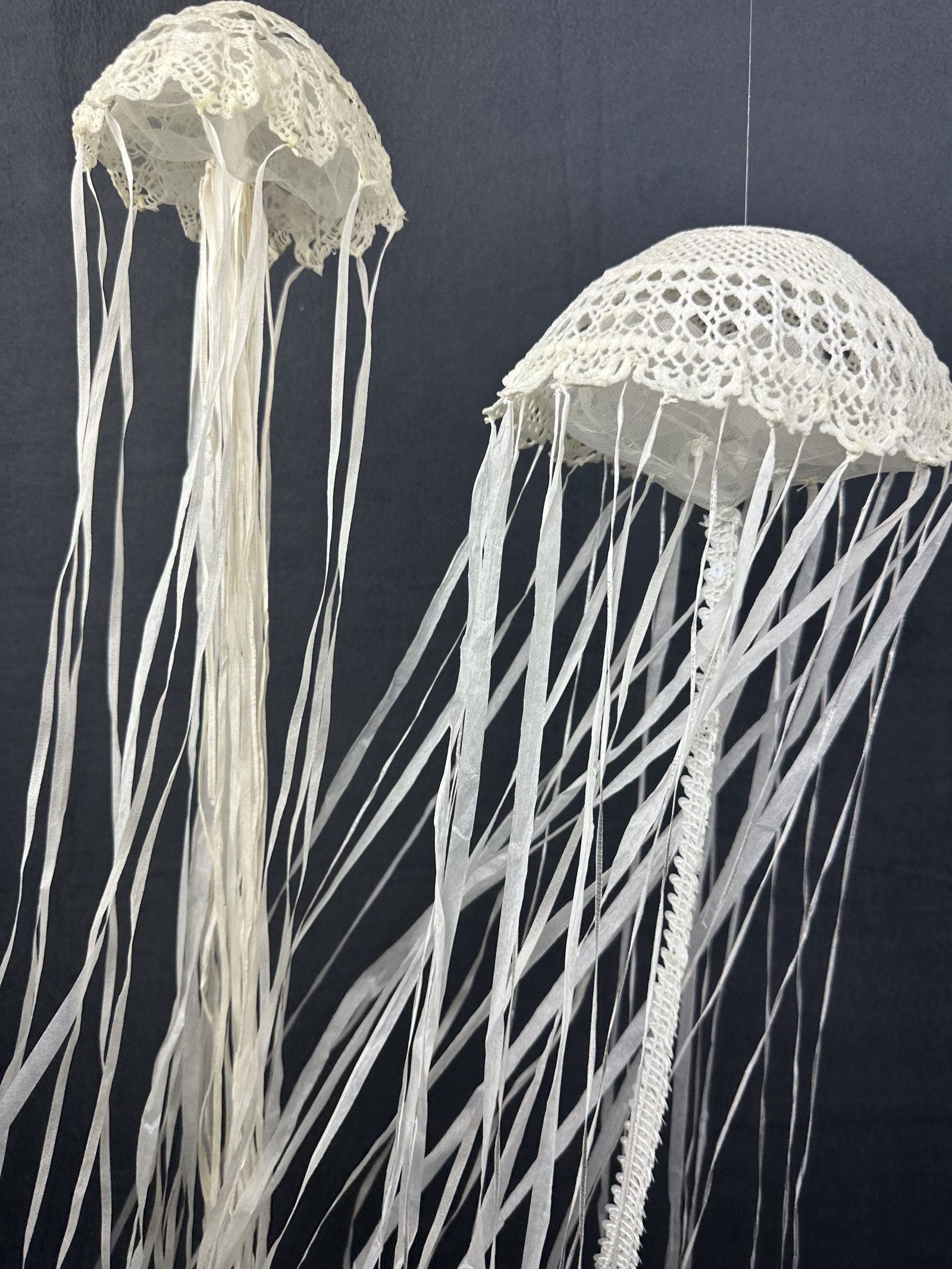the jellyfish project
judy villett

june 1 - july 14, 2024
craft council of bc
artist demonstration: 10a - 5:30p | June 1 and July 14

artist statement
This project began with garbage. A few years ago, I was very affected by a David Suzuki TV show about the proliferation of jellyfish near masses of floating plastics in the ocean off Japan. The floating islands of trash provide shade and increase plankton growth, attracting small fish and the jellyfish who feed on both plankton and small fish. My concerns are the loss of fish for human consumption, and the disruption of the natural processes in our oceans.
I asked myself how could I use my skills and techniques as a textile artist to illustrate this story?
I experimented with a variety of liquid textile stiffening agents to create the bodies of jellyfish, finally settling on GAC 400, an acrylic polymer which dries to a hard film. I used bowls to form and dry hand-crocheted doilies which have been soaked in the liquid medium. I had a wealth of doilies from my family and friends to choose from.
Next, I constructed lining made from sheer fabric, gathered into pouches attached with hand stitches to the stiffened doilies. Some have ambiguous shapes tucked inside to symbolize the remains of fish dinners.

Then a variety of streamers were attached around the edge and in the centre, hand-stitched or knotted in place. I used lightweight silk, ribbon, yarn and paper. Each jellyfish is unique: different sizes, threads, and patterns. Each has a nylon fishline attached through the top to be anchored onto the metal grid covered with garbage floating above the jellyfish.
The sturdy white 2’ x 7’ grid wall which will support the trash mat is covered first with stitchable plastics. I used a darning needle, heavy cotton thread, long stitches and knots to secure the plastics and disguise the grid. Three- dimensional plastic objects are secured into and on top of the substrate with hot glue. The plastics were curated and cleaned over several years from my own household recycling collection. I chose only translucent or white plastic and objects. A few plastic bottles and objects hang below the floating mass amongst the jellyfish.
My goal is to create a beautiful installation, with tendrils gracefully swaying in the air/ocean currents as light filters through the translucent trash cloud. I want the viewer to be drawn in by the graceful shapes, patterns and shadows, only to realize that there is more to the story.
The beautiful jellyfish might be a symptom of an ailing ocean environment.
Although I am very diligent about recycling and try to avoid buying produce in plastic bags, it is appalling how much is generated by just my small household. How does so much of it end up in the ocean? Not only is it a concern for changing ecology, but plastics continue to break up into small particles which enter the food chain and eventually end up accumulating inside our bodies.
Surprisingly, in this interconnected web of life, not every creature is harmed by climate change. Some are actually thriving on or below our pollution.
June 8 is World Ocean Day – help celebrate it by taking action.
The following are some of the accredited organizations helping to clean up and prevent pollution:
Ocean Conservancy | The Ocean Cleanup | UNESCO Ocean Literacy | Living Oceans Society | Mind Your Plastic | Canada’s Plastic Pact | Oceana | UN Environment Program | Ocean Wise Conservation Association, 440 Cambie St. #101, Vancouver BC
artist bio
Judy Villett is a New Westminster textile artist. Her formal art education began at the University of Alberta in Fine Arts. Stepping outside the academic art world, she began to silkscreen images on fabric and added quilting to her designs. Combining traditional techniques and contemporary design was a breakthrough. It led to a lifetime passion for the tactile quality and multidimensional aspects of cloth. A current series called Public Works combines her photographs, digitally printed on fabric with machine quilting. She takes a closeup look at the textures and patterns of the city. Another series, Vistas, is a long-distance view of high-rise structures and how they interact with nature. Her work has been shown in juried and solo exhibitions in England, Japan, USA, and Canada. Judy has recently retired from a long and satisfying career teaching across Canada and western USA. She continues to lecture, judge and curate while preparing work for solo or group exhibitions.

